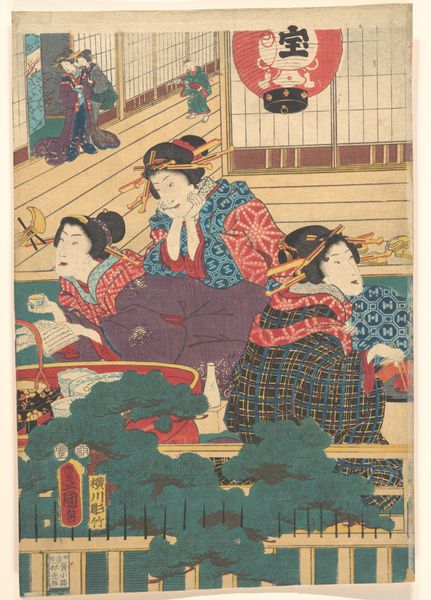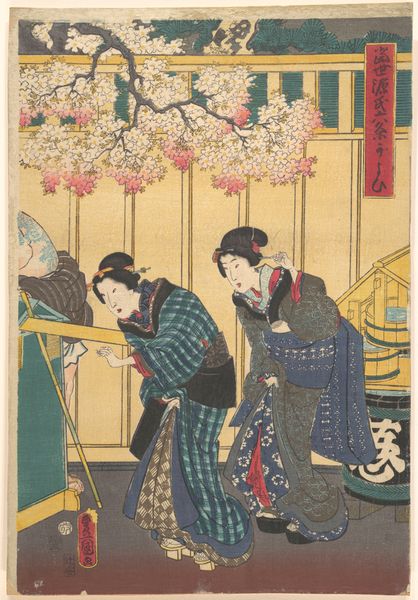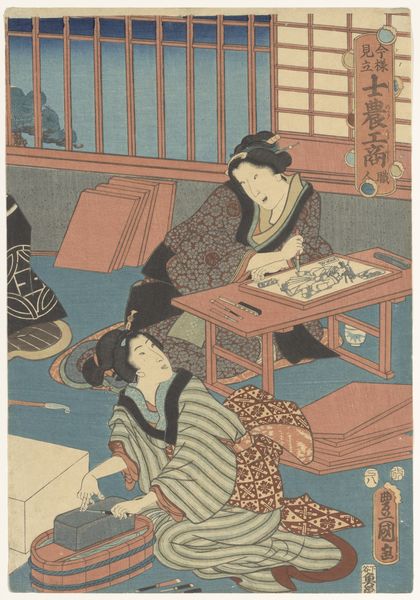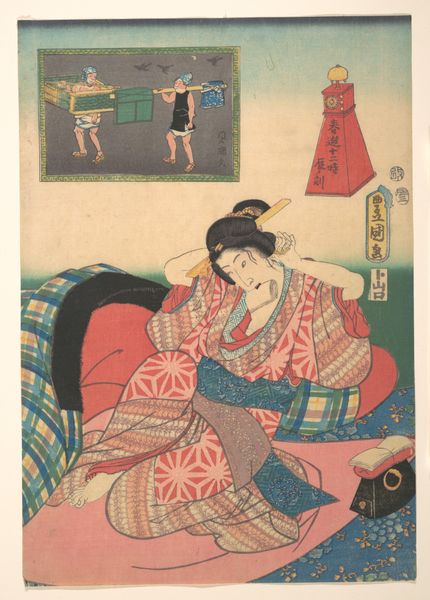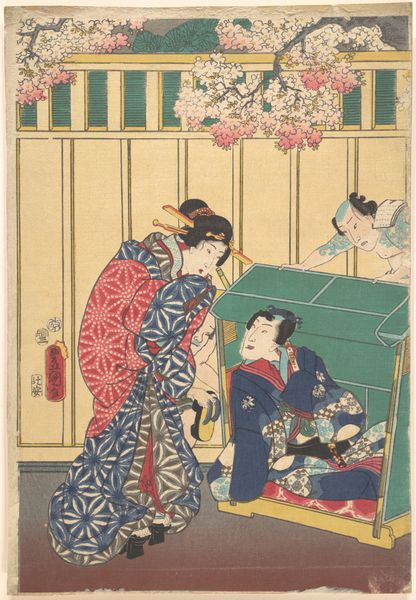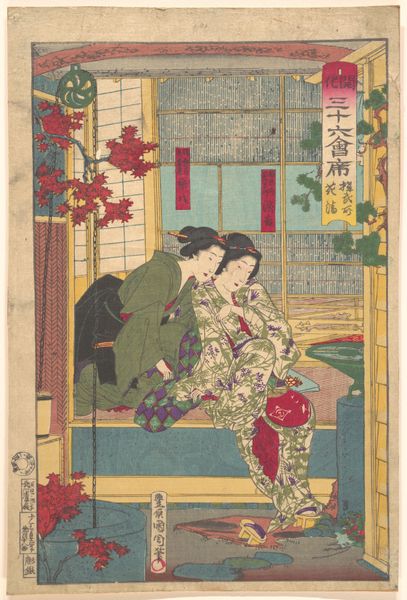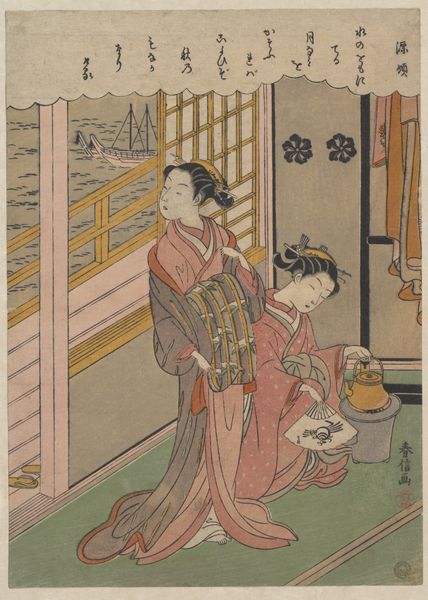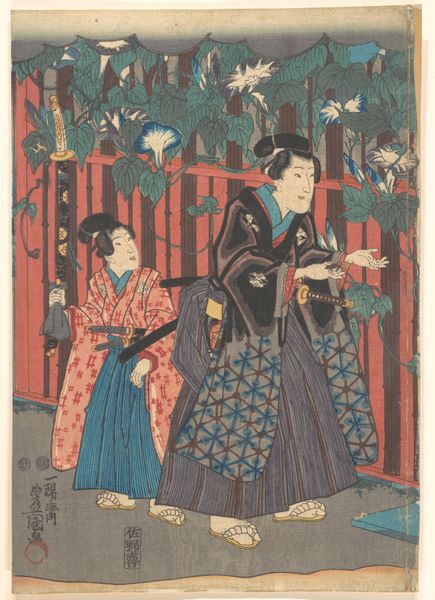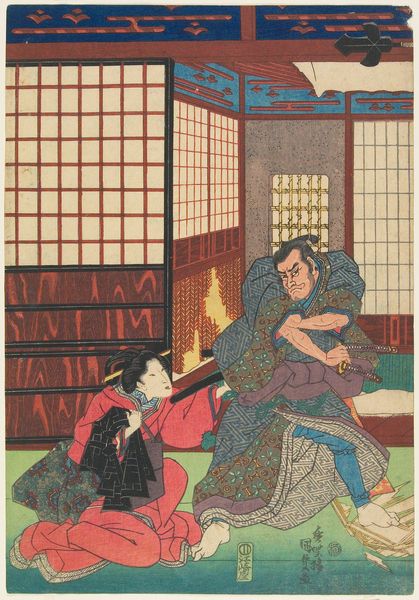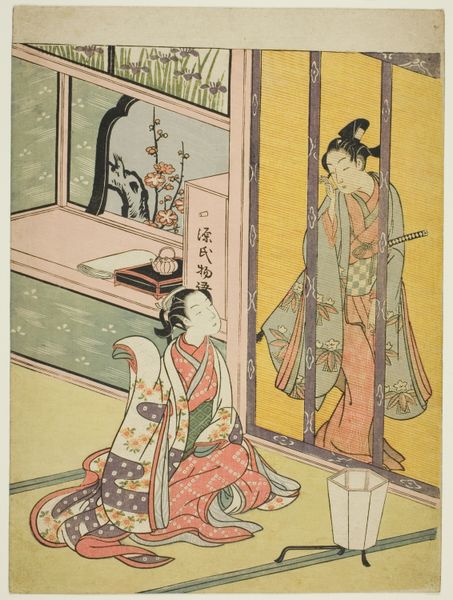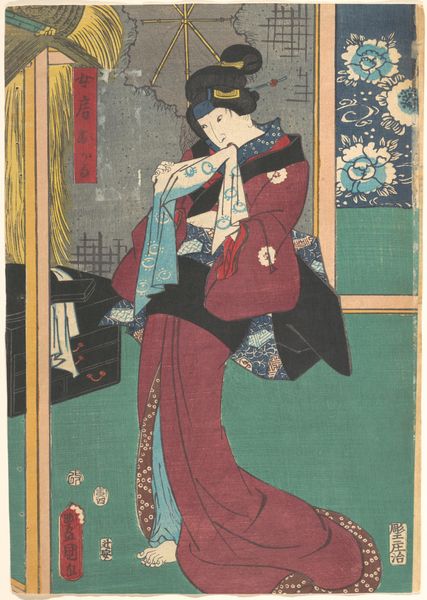
#
portrait
# print
#
asian-art
#
ukiyo-e
#
figuration
Dimensions: Image: 14 1/16 × 9 7/8 in. (35.7 × 25.1 cm)
Copyright: Public Domain
Curator: Looking at this piece, I am struck by the palpable anxiety emanating from these figures. There’s a real sense of unease. Editor: This is a print by Utagawa Kunisada. While his exact birth year is debated, we know he worked between 1786 and 1864. It is simply titled “Print” and can be found at the Metropolitan Museum of Art in New York. The cultural memory embedded in these images can guide viewers closer to how those depicted were perceived. Curator: Kunisada masterfully uses color to amplify those underlying emotional currents. The teal and lavender hues of the garments clash, creating a visually jarring experience that mirrors the internal conflict visible in the figures’ expressions. The arrangement of their limbs – so angular – amplifies the tension. Editor: As a master of ukiyo-e, or "pictures of the floating world,” Kunisada’s print offers us a glimpse into Edo period Japan and the representation of women within its social structure. The exaggerated expressions were important in conveying the emotional intensity and story of the play. Curator: Ah yes, and that stylized depiction points to a codified understanding of beauty and status. Note how the exaggerated features of the courtesan communicate both power and vulnerability in equal measure. Do you think it is important that he chose to immortalize this kind of performance for posterity? Editor: Well, prints like these served as a form of visual media. While Kunisada captured idealized representations, they often were more about shaping public perception through the socio-political role art played and who controlled the image, than the historical context. Curator: Even if those historical representations weren’t exactly accurate, I am drawn into a complex interplay between artifice and genuine emotion, wouldn’t you agree? This has been a productive experience, thank you! Editor: Agreed, Kunisada's Print is much more than a static artifact, it continues to engage viewers and spark discourse, even centuries after its creation. It's what gives us, the public, permission to understand past historical dynamics.
Comments
No comments
Be the first to comment and join the conversation on the ultimate creative platform.
